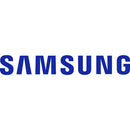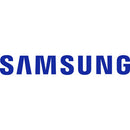Description
Samsung Transceiver/Media Converter
Discover a dependable, high-performance media conversion solution from Samsung. The Samsung Transceiver/Media Converter bridges fiber optic and copper Ethernet networks, enabling scalable connectivity across data centers, campuses, and telecommunications installations. Built for reliability, compatibility, and easy deployment, it helps you extend reach, reduce complexity, and maximize your existing infrastructure. This versatile device is engineered to support mixed media environments, ensuring your Ethernet services continue to run smoothly as your network evolves.
- Versatile media conversion across environments: The Samsung Transceiver/Media Converter seamlessly bridges fiber optic and copper Ethernet networks, enabling longer reach and flexible topology without rewiring. By converting signal types at the edge or within a data center, it reduces the need for costly upgrades and supports mixed-vendor environments. In campuses, multi-building deployments, or industrial facilities, this converter extends network reach while preserving data integrity and performance. This flexibility helps you future-proof your network and adapt to changing bandwidth demands without downtime or disruption.
- Reliable, 24/7 operation in demanding environments: Engineered for continuous operation, the device combines robust components with dependable thermal performance to maintain stable connectivity across varying conditions. It helps safeguard critical applications by delivering consistent throughput and low effective latency. With built-in diagnostics and clear status indicators, network teams can monitor health and quickly identify potential issues before they impact users, reducing mean time to repair and supporting service-level commitments.
- Plug-and-play deployment with minimal configuration: Designed for quick installation, this transceiver/media converter slips into standard network closets or equipment racks with ease. For basic deployments, it delivers immediate connectivity with no complex setup required. When needed, administrators can leverage straightforward management options to tailor operation to specific topologies, making it suitable for both small offices and expansive data centers while preserving familiar workflows.
- Comprehensive management and diagnostics: The unit provides intuitive LED indicators for link status and activity, enabling at-a-glance monitoring. Advanced diagnostic capabilities help technicians pinpoint cabling faults, signal integrity issues, or misconfigurations, speeding troubleshooting and reducing downtime. Compatible with conventional network monitoring practices, it supports efficient capacity planning and proactive maintenance across enterprise, campus, and industrial networks.
- Samsung ecosystem compatibility and future-proofing: As part of the Samsung networking portfolio, this transceiver/media converter is designed for reliable interoperability with standard Ethernet equipment and existing infrastructure. Its modular approach supports incremental upgrades and evolving media requirements, protecting your investment as your network grows and migrates toward higher speeds or new media types without necessitating a full infrastructure overhaul.
Technical Details of Samsung Transceiver/Media Converter
- Specifications: Not available in the current product listing. This section would normally include information about supported media types, data rates, connector types, operating temperature, and environmental ratings. Please refer to the official product documentation or vendor specifications for precise details.
- Form factor: Compact media converter module designed for straightforward integration into standard network enclosures or shelves.
- Power and compatibility: Designed to operate with common power inputs and to work alongside standard Ethernet and fiber interfaces within typical enterprise and data-center environments.
How to Install Samsung Transceiver/Media Converter
- Step 1: Identify the two network segments to connect—fiber optic on one side and copper Ethernet on the other. Confirm the correct fiber type and copper interface for your deployment.
- Step 2: Connect the fiber optic link to the corresponding fiber transceiver and attach the copper Ethernet device to the opposite port using appropriate cables. Ensure all connections are secure and clean to prevent signal loss.
- Step 3: Place the unit in a ventilated area and install it in a safe location within a rack or on a stable shelf. Ensure adequate airflow to prevent overheating during operation.
- Step 4: Power on the device and verify basic operation using the LED indicators. If your network requires management, access the device’s management interface to configure any applicable settings or monitors.
- Step 5: Run a basic connectivity test between the connected devices. Verify that traffic traverses the media converter correctly and that link and activity indicators reflect normal operation. Perform a throughput test if required to confirm performance.
Frequently asked questions
- What is a Samsung Transceiver/Media Converter? It is a device that bridges different network media types, typically converting signals between fiber optic and copper Ethernet to extend reach and enable interoperability across diverse networking gear.
- Do I need to configure it after installation? For basic use, many setups operate in a plug-and-play fashion. If your environment requires monitoring or specific topologies, you may configure management settings or integrate with your network management system as needed.
- Is it compatible with non-Samsung equipment? Yes. Media converters are designed to work with standard Ethernet and fiber interfaces, allowing interoperability with a wide range of devices from different vendors when used within supported specifications.
- What deployments benefit most from this converter? Enterprises, data centers, campuses, and industrial facilities that need to extend network reach, improve link reliability, or integrate mixed-media networks without replacing existing infrastructure.
- Where can I find exact specifications and compatibility details? Please consult the product’s official documentation or the vendor’s specifications page for model-specific data such as supported speeds, fiber types, connector types, and environmental ratings.
Customer reviews
Showing - Of Reviews




